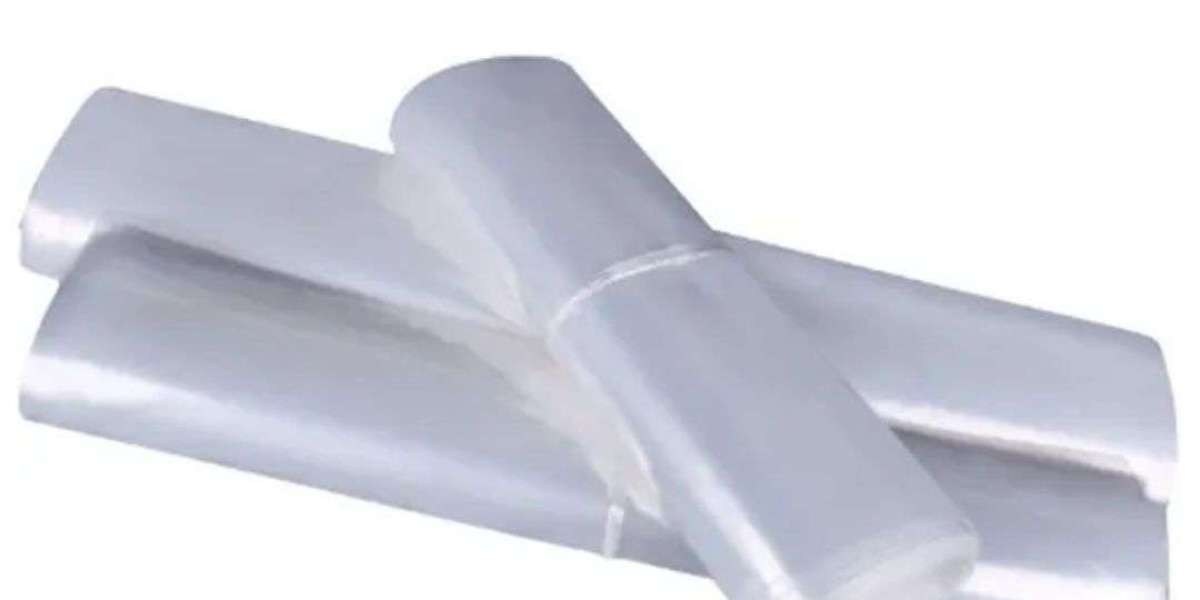Introduction to PE Bags and PE Liners
Polyethylene (PE) bags and liners are widely utilized in various industries due to their flexibility, durability, and cost-effectiveness. Made from polyethylene, a type of plastic that is both lightweight and strong, these products serve a multitude of purposes—from packaging food items and consumer goods to lining containers and protecting materials from moisture. The versatility of PE plastic bags and PE liners makes them indispensable in sectors ranging from agriculture to pharmaceuticals.
PE plastic bags, in particular, are recognized for their remarkable features, including excellent barrier properties that help protect contents from external elements. Whether used for safeguarding food from contamination or providing an effective moisture barrier for bulk goods, these bags have become a staple in packaging. Similarly, Pulkit Plastic Products offer protective solutions for containers, ensuring that the contents remain clean, dry, and secure during storage and transportation. As industries continue to evolve, the demand for these packaging solutions is expected to grow, reflecting their integral role in supply chains.
The Characteristics of PE Plastic Bags
PE plastic bags come in various forms, such as low-density polyethylene (LDPE) and high-density polyethylene (HDPE). LDPE bags are known for their softness and flexibility, making them ideal for applications requiring a degree of stretch. On the other hand, HDPE bags are more rigid and stronger, offering enhanced durability for heavier items, such as groceries or construction materials.
One of the key benefits of PE plastic bags is their resistance to moisture and chemicals. This resistance allows items packaged in these bags to remain protected in diverse environmental conditions, reducing spoilage in food products and preventing damage to goods during transit. The cost-effectiveness of these bags also plays a crucial role in their popularity. Businesses frequently monitor PE plastic bags price to ensure they manage their packaging budgets effectively, all while benefiting from a reliable and efficient solution.
Moreover, PE bags are customizable, allowing businesses to print branding elements and product information directly onto the packaging. This not only enhances visibility and recognition but also provides an opportunity for marketing and promotional activities. Customization ranges from simple logos to complex designs, catering to the diverse needs of consumers and businesses alike.
Applications of PE Plastic Bags
The PE plastic bags are versatile and find applications across numerous industries. In the food sector, these bags are essential for packaging perishables such as fruits, vegetables, and meats. Their ability to create a barrier against moisture and contaminants ensures that food items retain their freshness for extended periods, making them ideal for grocery stores and food distributors. In retail settings, these bags are often utilized for carrying goods, providing a practical solution for consumers.
In addition, the construction industry frequently employs heavy-duty PE plastic bags for packaging materials like sand and gravel. These bags' durability allows for safe transportation and storage, minimizing the risk of spills and waste during projects. Furthermore, PE plastic bags are used in agricultural applications, such as packaging seeds and fertilizers, where moisture protection and durability are critical.
The pharmaceutical sector also relies on PE plastic bags for packaging medications, medical supplies, and laboratory specimens. Their strength and moisture-resistant properties ensure that these sensitive items remain uncontaminated, thereby enhancing safety and compliance with regulations. The broad range of applications emphasizes the adaptability of PE bags and their significance in promoting operational efficiency across industries.
Understanding PE Liners for Packaging
PE liners serve as an essential component in packaging by providing an extra layer of protection for various containers. These liners can be made from plastic films and are designed to fit inside boxes, drums, and other storage units, ensuring that the contents are safeguarded from moisture, dust, and other external contaminants. The use of PE liners is especially prevalent in industries that handle bulk commodities or sensitive materials, such as food-grade products, chemicals, and pharmaceuticals.
One of the critical advantages of PE liners for packaging is their ability to create a barrier against moisture. By lining containers, businesses can prevent water damage that could lead to spoilage or degradation of the items stored inside. This protective characteristic is crucial for companies shipping products in humid or wet conditions, where even minor exposure to moisture can result in significant losses.
Moreover, PE liners can also aid in the controlled release of gases, which is beneficial for certain food products that require a specific storage environment. For example, some fruits and vegetables can continue to ripen during storage, and using liners designed to allow gas exchange can optimize their shelf life. This level of control is vital for maintaining the quality of goods during transportation and storage.
Environmental Considerations and Sustainability
Despite the many advantages offered by PE bags and liners, environmental concerns surrounding plastic waste cannot be overlooked. The proliferation of single-use plastics has raised awareness about pollution and its impact on ecosystems. As a result, many companies and consumers are calling for sustainable practices and alternatives.
In response to these concerns, manufacturers are developing biodegradable and recyclable PE plastic bags and liners. These innovations aim to reduce the environmental footprint of packaging solutions while retaining the functional benefits associated with traditional polyethylene. Businesses are beginning to explore options to incorporate eco-friendly materials into their packaging processes, addressing consumer demands for sustainability and responsible sourcing.
Furthermore, when used efficiently, PE liners for packaging can contribute to waste reduction. By enhancing the shelf life of products and preventing damage during transportation, these packaging solutions can minimize waste associated with product loss. Companies that prioritize sustainable practices and environmentally-friendly packaging materials will likely gain a competitive advantage as public awareness of environmental issues continues to grow.
Cost Factors and Market Trends
When considering the adoption of PE bags and liners, businesses often evaluate various cost factors. PE plastic bags price can vary based on factors such as the material type, thickness, and customization options. Bulk purchasing often leads to cost savings, making it advantageous for businesses with high-volume packaging needs. Furthermore, manufacturers may offer tiered pricing structures, providing flexibility for companies looking to optimize their packaging budgets.
Market trends indicate an increasing demand for PE bags and liners as companies seek efficient, cost-effective packaging solutions. With the rise of e-commerce and online shopping, the need for durable and reliable packaging materials has never been more critical. PE bags and liners are increasingly favored for shipping due to their lightweight nature and ability to withstand the rigors of transit.
In addition, advancements in manufacturing technology have led to improved production efficiency, resulting in competitive pricing for PE bags and liners. As more businesses become aware of the benefits associated with these products, the packaging industry is likely to see continued growth and innovation in this essential area.
Innovations and Future Directions
The future of PE bags and liners is poised for further innovation as manufacturers focus on enhancing functionality and sustainability. Research into alternative materials, such as bioplastics, is underway, aiming to reduce reliance on traditional petroleum-based polyethylene. Companies committed to sustainability are actively investing in developing greener packaging solutions that maintain performance standards while reducing environmental impact.
Enhancements in design and production techniques will also shape the future of PE bags and liners. Smart packaging technologies, such as sensors and RFID tags, may be integrated into PE packaging, allowing businesses to monitor products throughout the supply chain. Such innovations can improve inventory management, enhance traceability, and reduce waste, aligning with the growing emphasis on efficiency and accountability in logistics.
Furthermore, industry collaborations aimed at addressing plastic waste are becoming more prevalent. Partnerships between manufacturers, retailers, and environmental organizations are driving initiatives that encourage recycling, proper disposal, and the development of circular economy practices. These collective efforts will play a critical role in ensuring that PE bags and liners contribute to a more sustainable future.
Conclusion
PE bags and liners are essential components of the modern packaging landscape, offering versatility, durability, and cost-effectiveness across various industries. Their ability to protect products from moisture, damage, and contaminants solidifies their importance in sectors ranging from food to pharmaceuticals. As market dynamics shift towards greater emphasis on sustainability, the industry is witnessing a transition towards eco-friendly materials without compromising functionality.
Innovations in manufacturing, design, and sustainable practices are set to shape the future of PE plastic bags Price, providing companies with opportunities to enhance their packaging solutions while responding to consumer demands for responsible sourcing. By continuing to evolve and embrace sustainable practices, PE bags and liners will undoubtedly remain a cornerstone of efficient packaging for years to come.
Frequently Asked Questions
What are the primary uses of PE plastic bags?
PE plastic bags are commonly used for packaging food items, retail goods, agricultural products, and chemicals. Their moisture resistance and strength make them suitable for various applications across multiple industries.How do I find the best price for PE plastic bags?
To determine the best price for PE plastic bags, businesses should consider factors like material type, thickness, and purchase volume. Comparing quotes from various suppliers and opting for bulk purchases often leads to cost savings.Are PE liners recyclable?
Yes, many PE liners are recyclable. Companies are encouraged to implement recycling initiatives within their operations to minimize waste and promote sustainability.What advancements are being made in environmentally friendly packaging options?
Manufacturers are exploring biodegradable and recyclable materials as alternatives to traditional polyethylene. Additionally, innovations in smart packaging technologies are enhancing the functionality and sustainability of packaging solutions.







